Heat Transfer Of Radiation – What Is Radiation In Heat Transfer
Radiation is a transfer of heat energy between two bodies at a different temperature that occurs in a form of electromagnetic waves. Since these electromagnetic waves do not need a medium to travel. Anybody with a temperature greater than absolute zero or zero kelvin will emit radiation. Radiation also occurs where no solid or no fluid medium is present. Unlike Conduction & Convection, radiation does not require any intermediate medium. Hence heat transfer from the sun can travel through the vacuum of space to reach earth.
A mathematical formation of heat transfer of radiation from one Surface to another surface is given by the following equation.
- Qij = Ai * εi * Fij * σ (Ti^4 – Tj^4)
- Qij = Radiatate heat energy which transfers from surface i to j
- ε = Emissivity – which is measure amount of thermal energy radiated by a surface.
- Fij = View factor between the surface.
- Ti & Tj = Absolute temprature on surface i & surface j respectivly in absolute unit.
It is important to note that we will always use an absolute scale that is kelvin or Celcius while modeling radiation. In the thermal simulation, like phase change, conduction or convection we can use any temperature scale but in radiation, the calculation must be performed on an absolute scale.
- σ = Stefan-Boltzmann constant = 5.67 x 10^-8 w/m²k^4.
In the simulation, we will be modeled heat transfer of radiation as a boundary condition in a conduction-based Solver.
Now let’s look How different bodies or materials will behave when subjected to incident thermal radiation.
when a certain amount of thermal radiation is incident on a surface, Part of it will be absorbed, Some part of it will be reflected & the rest of it will be transmitted through the body. The fraction of incident radiation that is transmitted by the body is known as transitivity (τ). The fraction that is absorbed by the body is known as absorptivity (α). The fraction that is reflected by the body is known as reflectivity (ρ). Since these 3 components of incident radiation will always add up to 1.
τ + α + ρ = 1
Based on the value of these 3 components the behavior of the body will be classified.
- If a body does not transmit any incident thermal radiation means transitivity (τ) is zero and absorptivity (α) & reflectivity (ρ) is non zero, then the body is said to be an opaque body
- If the body absorbed all incident radiation means absorptivity (α) is equal to 1 and the other two-component (reflectivity (ρ) and transitivity (τ) ) is zero, the body is called a black body.
- If the transitivity (τ) of body is equal to 1 means the body transferred all incident radiation and other two-component (reflectivity (ρ) and absorptivity (α) ) is zero, the body is called a transparent body.
- Likewise, If the body reflects all incident radiation means reflectivity (ρ) is equal to 1 and another two-component (transitivity (τ) and absorptivity (α) ) is zero, the body is called the white body.
The white body and black body are idealized physical states which are not found in nature. But there is some example which is close to the white body and black body. The polished mirror-like surface reflects most of the incident radiation like aluminum foils is close to the white body.
Asphalt road absorbed most of the incident radiation so it can be said closer to the black body.
- The real surface in the world falls somewhere in between the white body and the black body. The gray bodies are close to the real-world bodies. The gray bodies may transfer, may absorb, or may reflect the radiation incident on them, which means real surfaces have non-zero reflectivity, non-zero absorptivity, non-zero transitivity. This together adds up to 1.
τ + α + ρ = 1
Emisivity
- As we know earlier, anybody with a temperature greater than absolute zero or zero kelvin will emit thermal radiation. The amount of thermal radiation emitted by the body depends on its surface property called ’emissivity. It is defined as the ratio of energy radiated from the material’s surface to the energy radiated from the black body’s surface under the same temperature and the same wavelength. It is a dimensionless quantity
Factors affecting emissivity
(1) Nature of surface.
- A polished mirror-like surface has a good emissivity compared to the rough surface because the polished surface reflects most of the incident thermal radiation instead of absorbing it.
(2) Material of surface
(3) Direction of emitted radiation.
For more information, you can read the article “What Factors Influence the Emissivity of a Material?“
(4) Temperature
Certain aluminum alloy changes its emissivity from 0.3 to 0.1 when temperatures raise 600 K to 800 K respectively.
View factor – Heat transfer of radiation
- It is defined as a portion of radiative heat flux that leaves from one surface (i) that strikes on another surface (j). In very simple words, the view factor is a factor to measure how effectively one surface (i) can see another surface (j). Note that the view factor is fully based on geometry. It is not related to the temperature of the body or any physical surface property. If the view factor does not depend on the temperature of the body or any physical surface property, why is it important? Why does the view factor see in the radiative heat flux equation? This is because thermal radiation depends on the orientation between the surface.
- For example consider a cube block has two color side, red and blue (above image), is rest near the fire as shown in the image. After a few minutes, you will observe that the red surface which is perpendicular to fire have more temperature compared to the blue one. This is due to different orientations and distances. For different surface, the amount of radiative heat to them are not the same. That’s why the view factor is important that accounts for the effect of orientation between the surface for radiation heat transfer. It is scaler quantity, vary between zero and one ( 0 ≤ Fij ≤ 1 ). If one surface(i) can see easily other surfaces (j) then, its view factor Fij will be greater than zero.
- Imagine that there is 2 faces blue (i) and pink (j) (above image). The blue (i) surface can easily see the pink (j) surface. So the view factor from blue to the pink surface will be larger than zero. However, you can not see the green (k) surface which is located on another side from blue (i). So, the view factor from blue (i) to green (k) surface will be zero. In such cases, the view factor can be calculated by visual inspection.
- In another case, Consider a flat plate or convex surface (below image). Imagine if you are standing on the surface and viewing outward. You will not able to see any other parts of the surface. In such a case, the view factor will be zero.
- For concave surface, if you view from any point, you can see other parts of the same surface hence view factor will not be zero but as shown in the below image, the side of the view extends beyond the surface meaning that the view factor is not exactly equal to 1. It will be somewhere in between zero and one.
- It will be calculated mathematically instead of visual inspection. For calculating the view factor mathematically, we need distance (r) between the surface, area (dA1 & dA2), the angle Θ1 & Θ2 between the surface normal. View factor from surface 1 to 2 will be calculated by the following equation
dF12 = ( CosΘ1 x CosΘ2 x dA2 ) / ( Πr² )
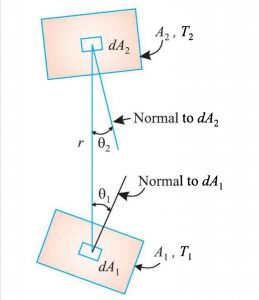
- For real-world applications, calculating the view factor is a complex task except for the simplest of geometries. For complex geometry, we need the help of a numerical method powered by modern computer power to calculating the view factor.
- In the simulation of heat transfer problems, the finite element solver will automatically calculate the view factor for each match surface. In FEA, the complex geometry is discretized or meshed in a number of small elements and for each element, the view factor is calculated. So there are thousands of elements and the view factor matrix will become thousand x thousand. Thus, computer simulation is ideal for such complex real-world geometries. The FEM solver solves this view factor matrix to calculate the incident radiation from one surface (i) to another surface (j).
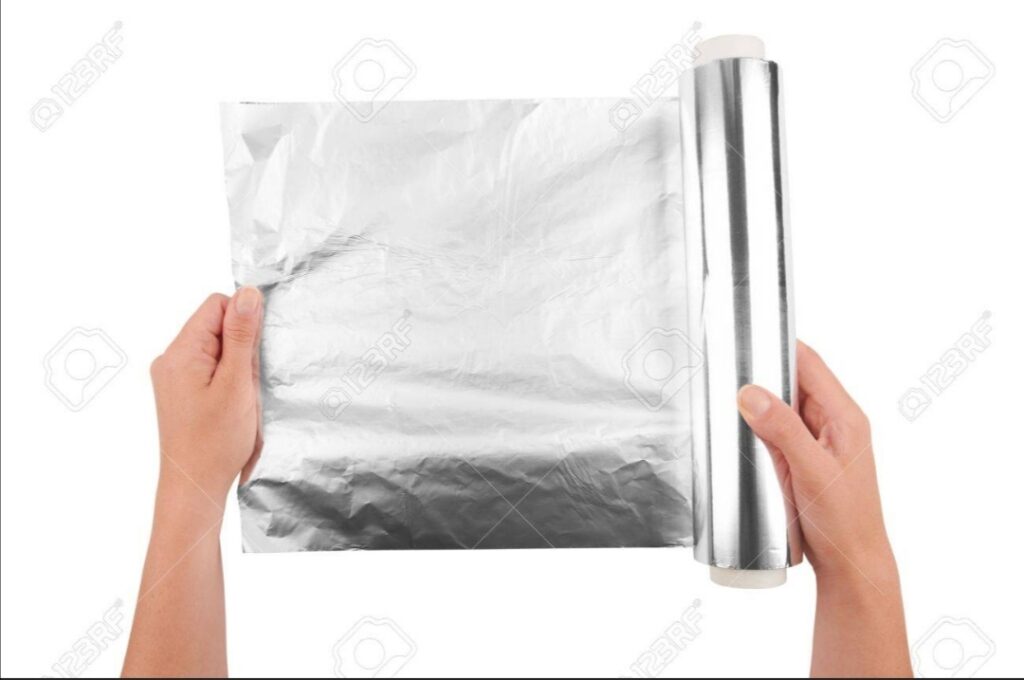

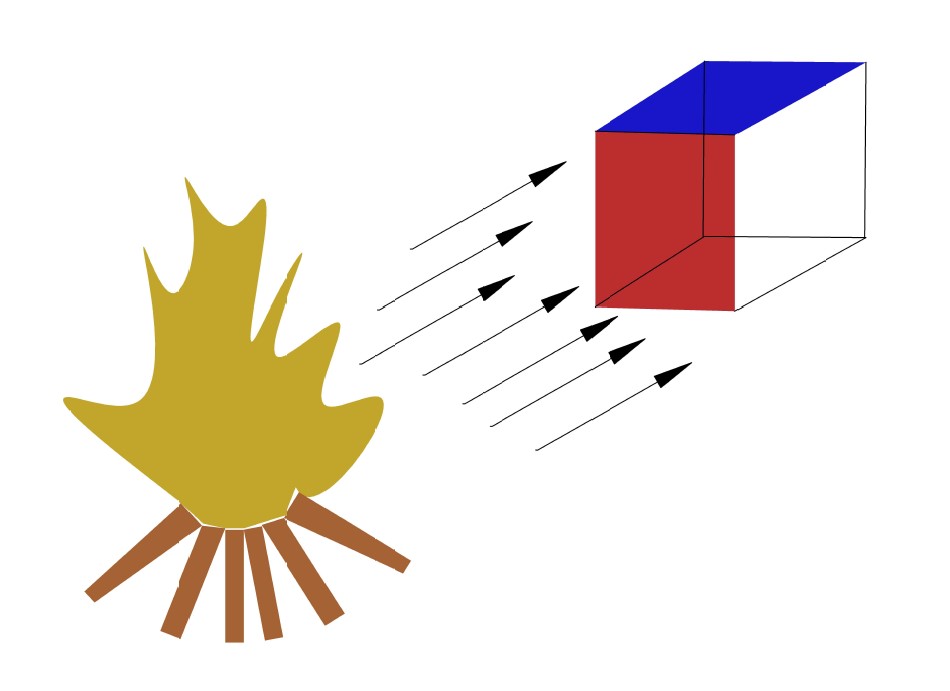
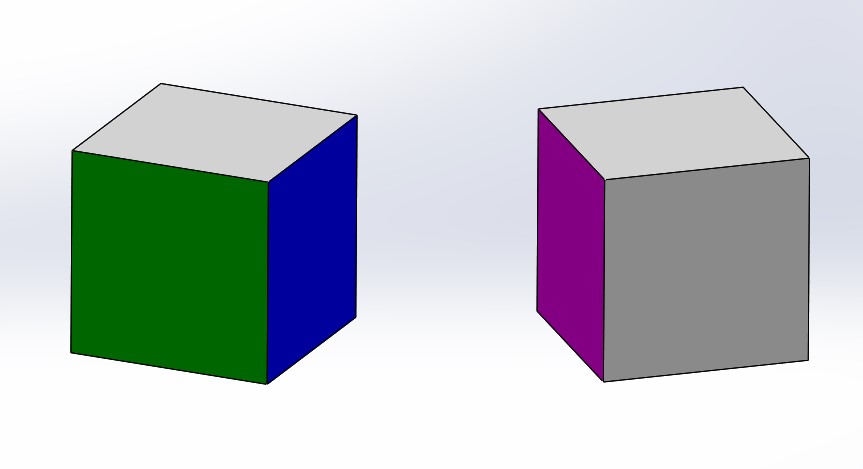
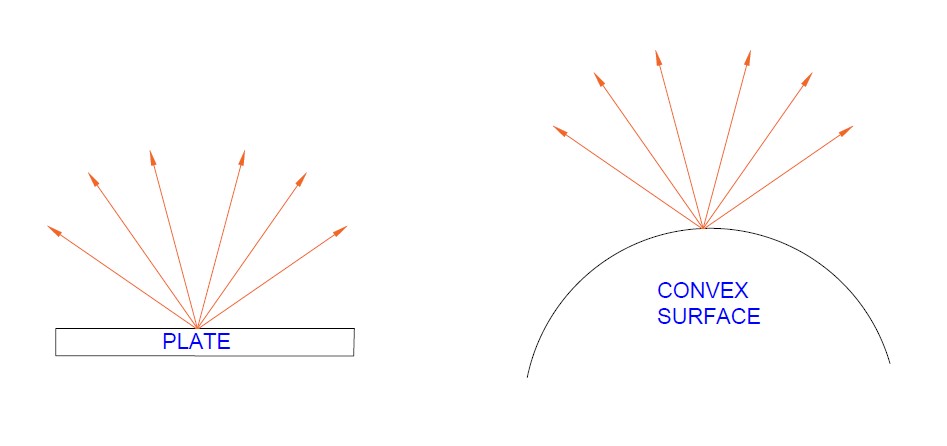
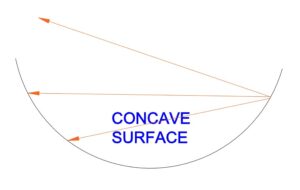


I enjoy you because of your entire work on this web page. My aunt really likes getting into internet research and it’s easy to see why. We hear all about the compelling manner you give worthwhile ideas on the web blog and even boost contribution from some others about this concern while our own daughter is without question studying a lot. Take pleasure in the rest of the year. You’re conducting a splendid job.